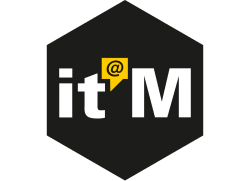Design Principles
- vuetify:
Vuetify is built around Material Design principles, ensuring that all components are visually consistent and adhere to Google's guidelines. This focus on design helps developers create applications that are not only functional but also aesthetically pleasing.
- quasar:
Quasar embraces a versatile design philosophy, allowing developers to create applications that look and feel native across different platforms. It supports Material Design and iOS design guidelines, ensuring a consistent user experience regardless of the device.
- element-ui:
Element UI is designed with a focus on enterprise applications, providing a professional and polished look. Its components are built with usability in mind, ensuring that they are intuitive and easy to interact with, which is essential for complex applications.
- buefy:
Buefy follows the Bulma CSS framework's design principles, promoting a clean and modern aesthetic. It emphasizes simplicity and responsiveness, making it easy to create visually appealing interfaces without extensive customization.
Component Variety
- vuetify:
Vuetify offers a vast array of components that cover nearly every aspect of UI design, from basic buttons to advanced data visualization tools. Its extensive library allows developers to build rich and interactive applications with ease.
- quasar:
Quasar provides an extensive range of components, including those for mobile and desktop applications, allowing developers to create fully responsive designs. Its library includes unique components like QLayout and QPage, which facilitate the creation of complex layouts.
- element-ui:
Element UI boasts a comprehensive set of components tailored for enterprise applications, including advanced data tables, forms, and navigation elements. Its extensive library allows for the rapid development of complex user interfaces with minimal effort.
- buefy:
Buefy offers a moderate selection of components that cover essential UI needs, such as buttons, modals, and notifications. While it may not have as extensive a library as others, it provides the core components needed for most applications without overwhelming complexity.
Customization
- vuetify:
Vuetify offers extensive customization options through its theme system, allowing developers to easily change colors, typography, and component styles. This flexibility ensures that applications can maintain a consistent brand identity while adhering to Material Design principles.
- quasar:
Quasar excels in customization, offering a powerful CLI that enables developers to tailor their applications extensively. It supports theming, allowing for easy adjustments to color schemes and styles, making it ideal for projects with unique branding requirements.
- element-ui:
Element UI provides a robust customization system, allowing developers to modify component styles and behaviors through its configuration options. This flexibility makes it suitable for applications that require specific branding or design adjustments.
- buefy:
Buefy allows for basic customization through Bulma's Sass variables, making it easy to adjust the look and feel of components. However, it may require additional CSS for more advanced styling needs, limiting its flexibility compared to others.
Learning Curve
- vuetify:
Vuetify has a moderate learning curve, particularly for those familiar with Material Design. Its extensive documentation and examples help ease the learning process, but the breadth of components may require time to explore fully.
- quasar:
Quasar has a steeper learning curve, especially for developers unfamiliar with its CLI and multi-platform capabilities. However, once mastered, it offers powerful tools for building complex applications efficiently.
- element-ui:
Element UI has a moderate learning curve due to its comprehensive set of components and features. While it is well-documented, the variety of options may require some time to fully understand and utilize effectively.
- buefy:
Buefy has a gentle learning curve, especially for those familiar with Bulma. Its simplicity and straightforward API make it easy for new developers to pick up and start building applications quickly.















